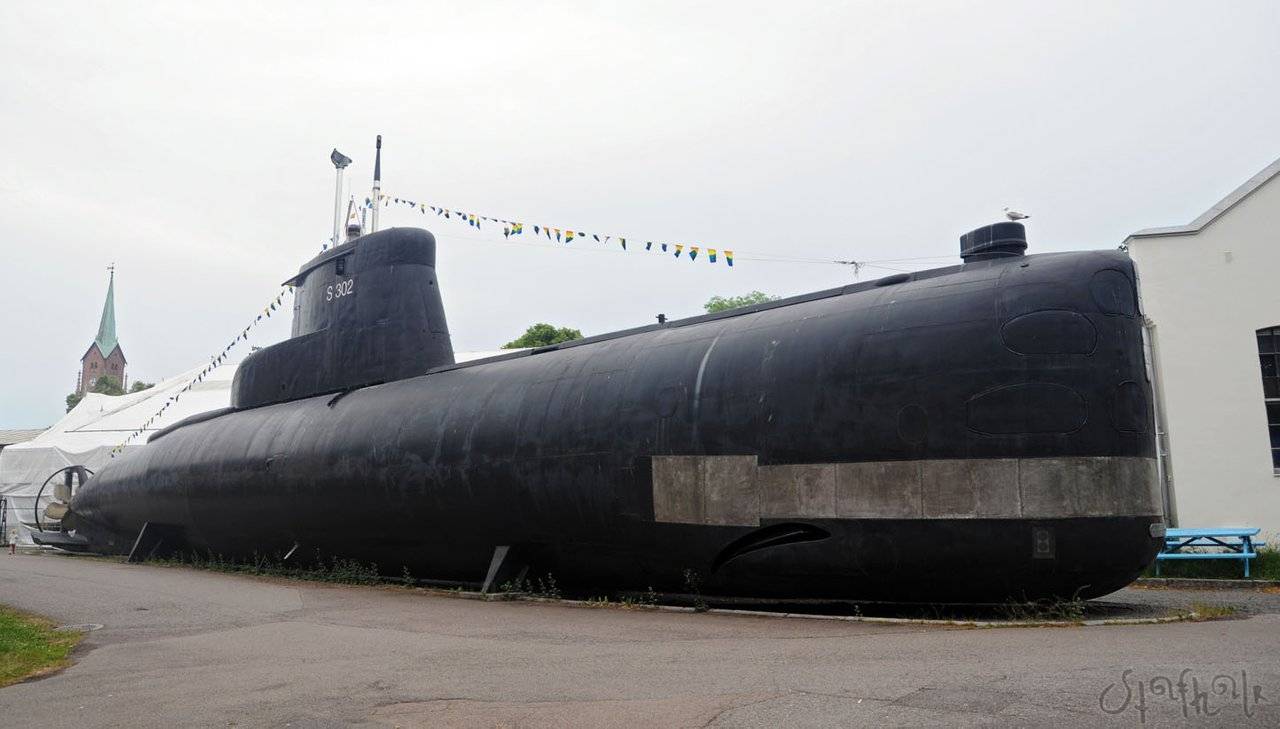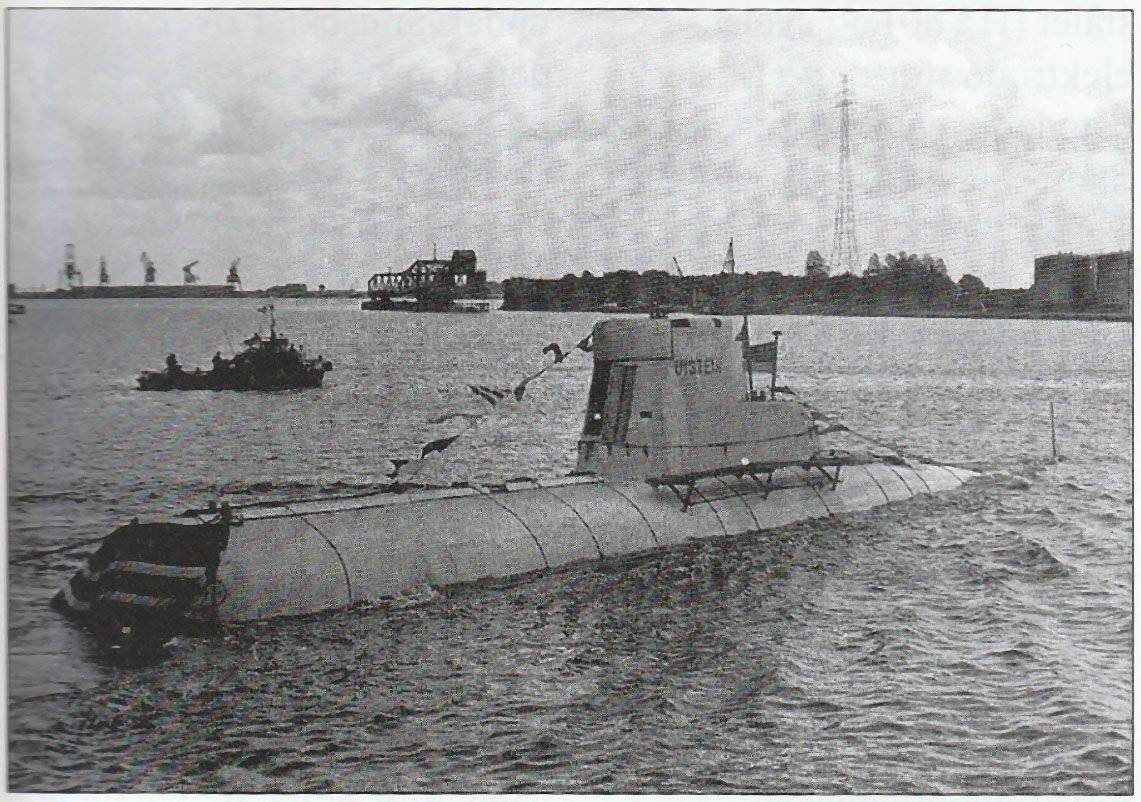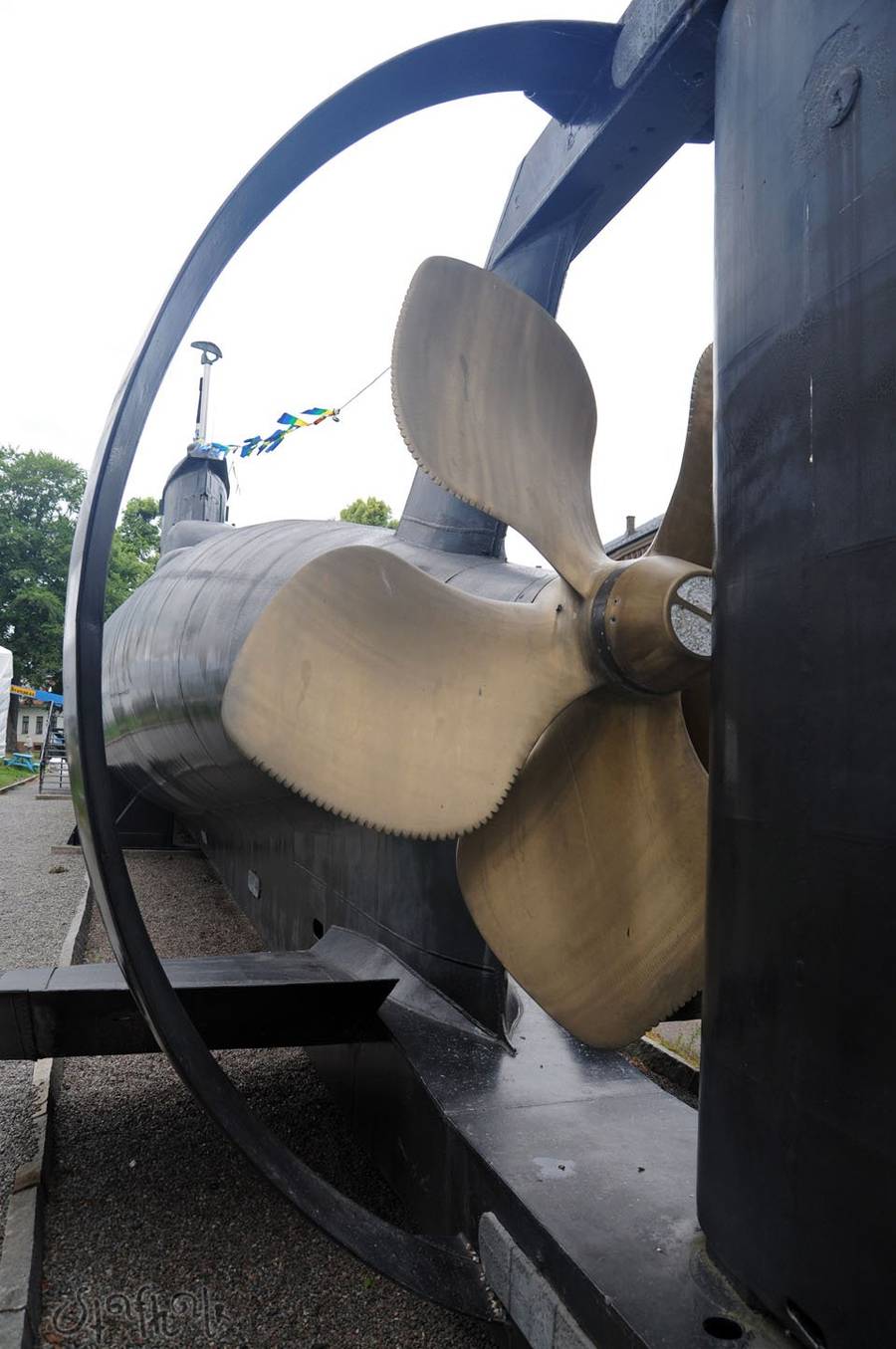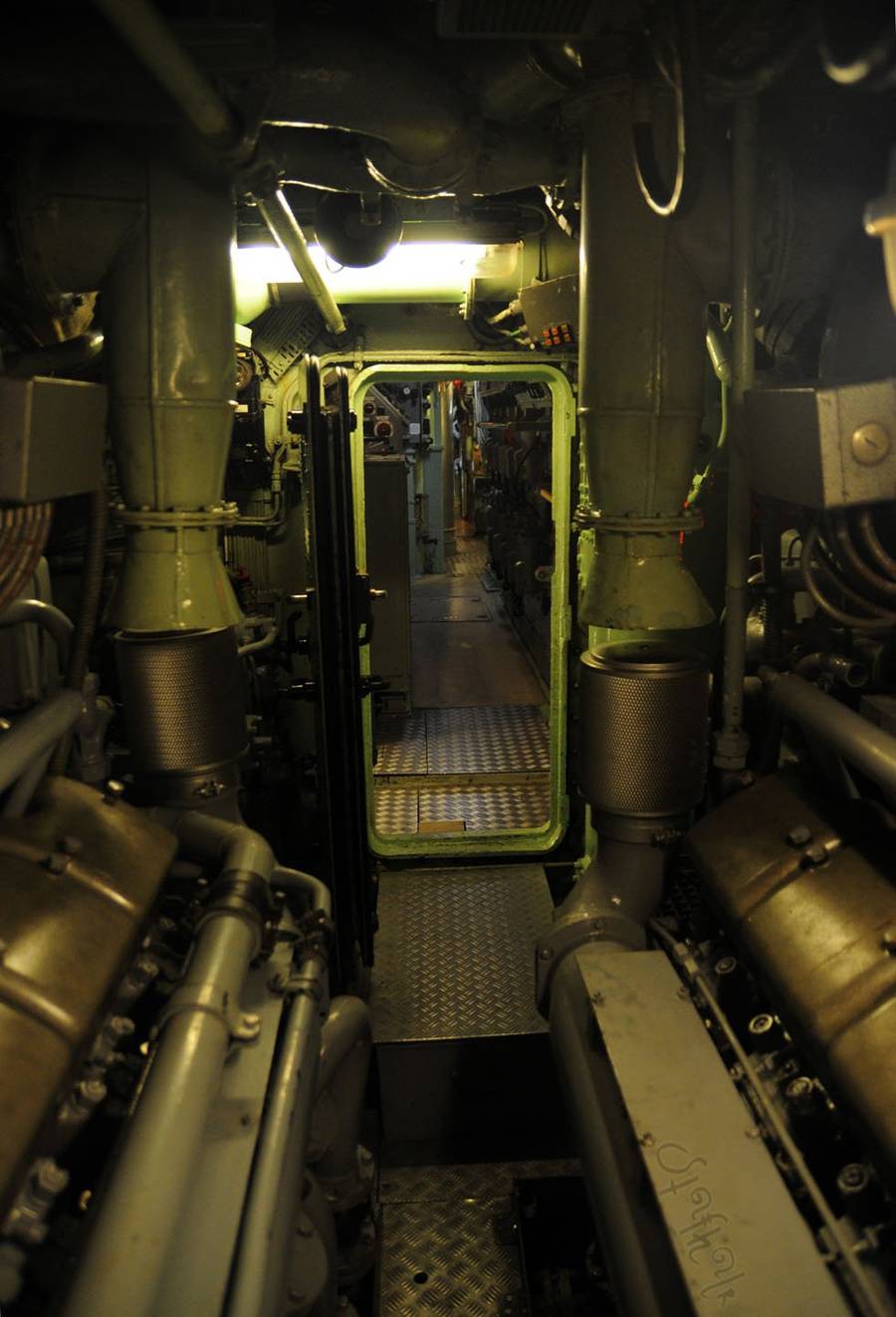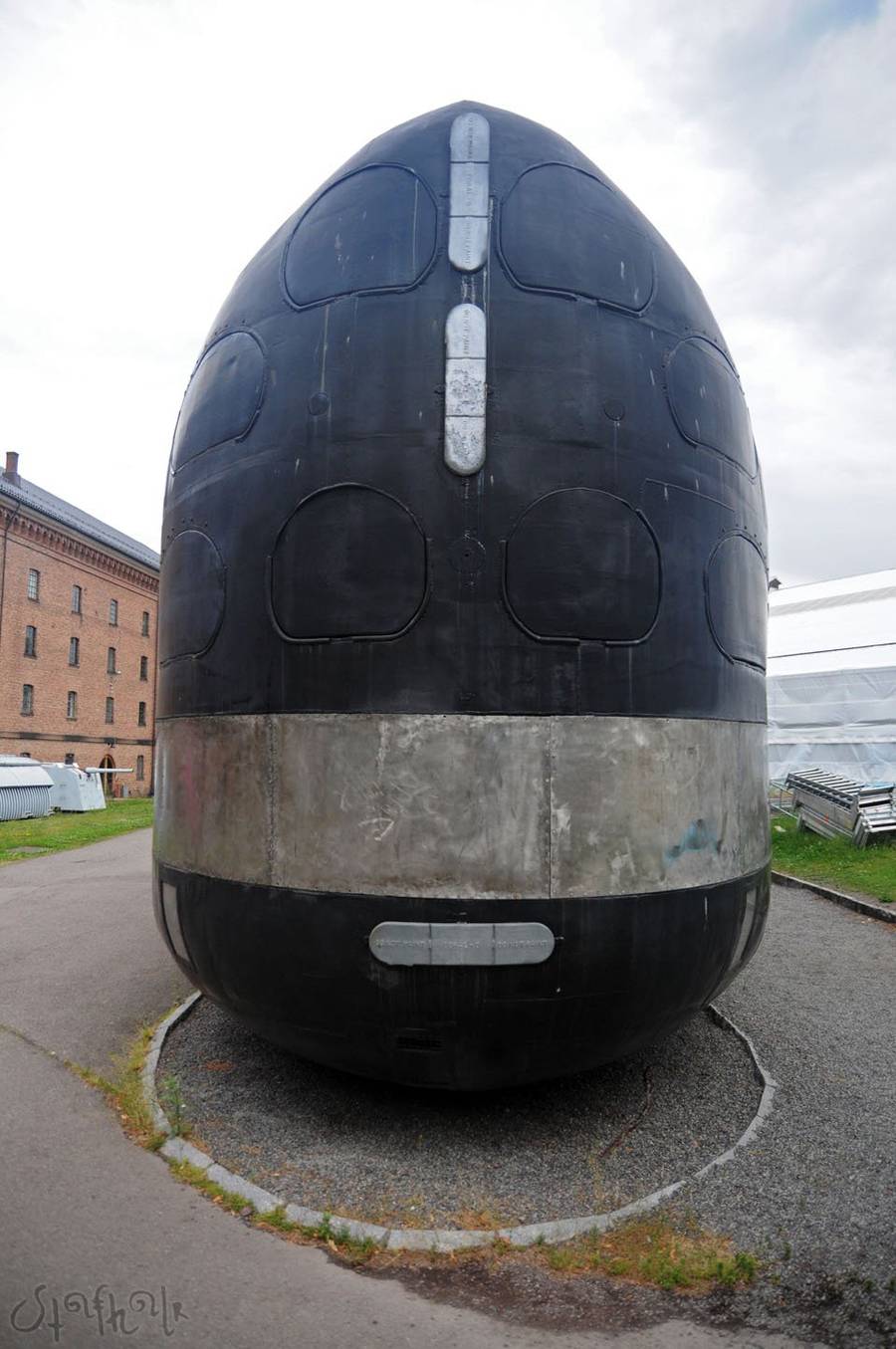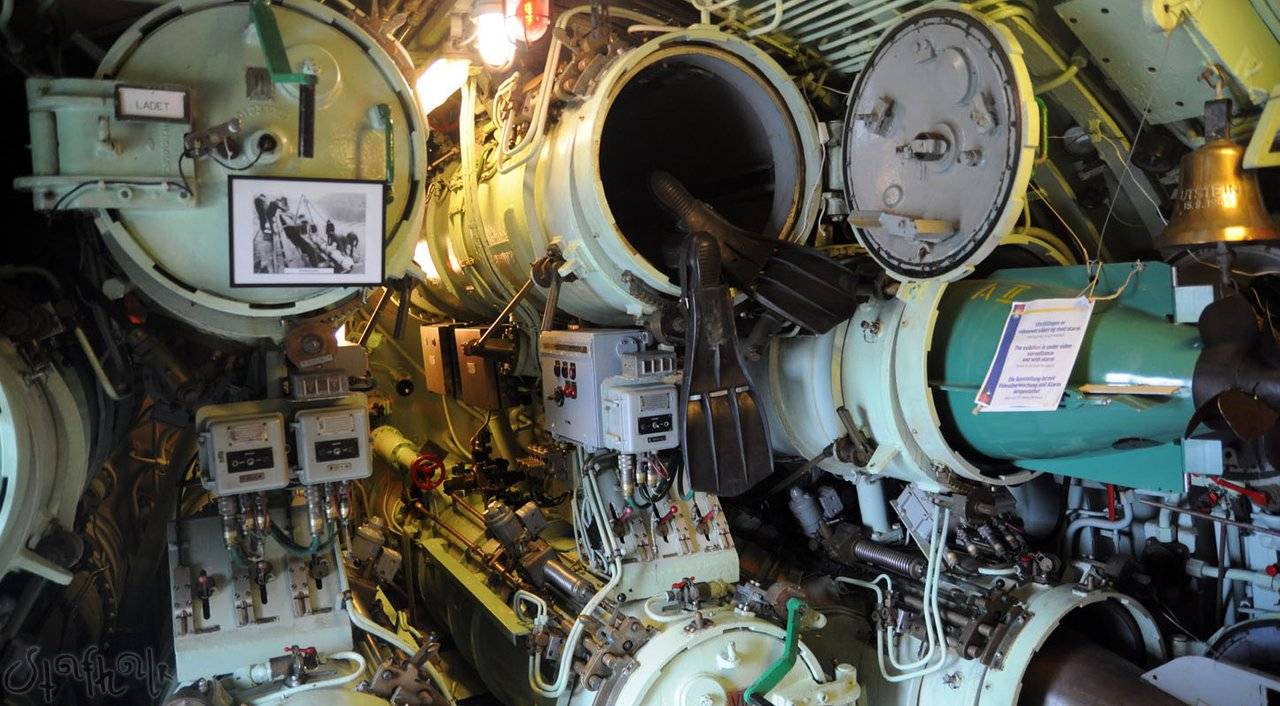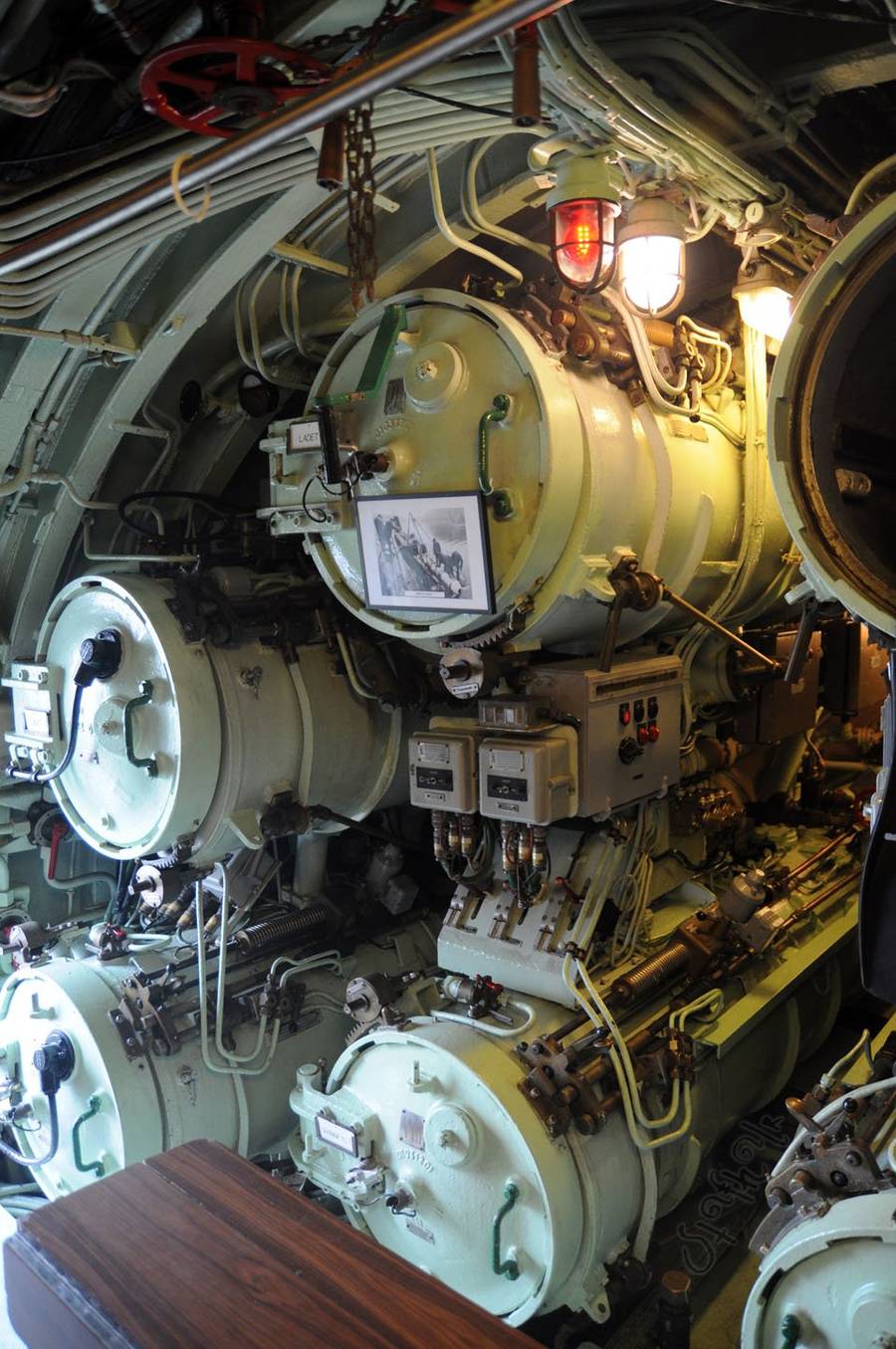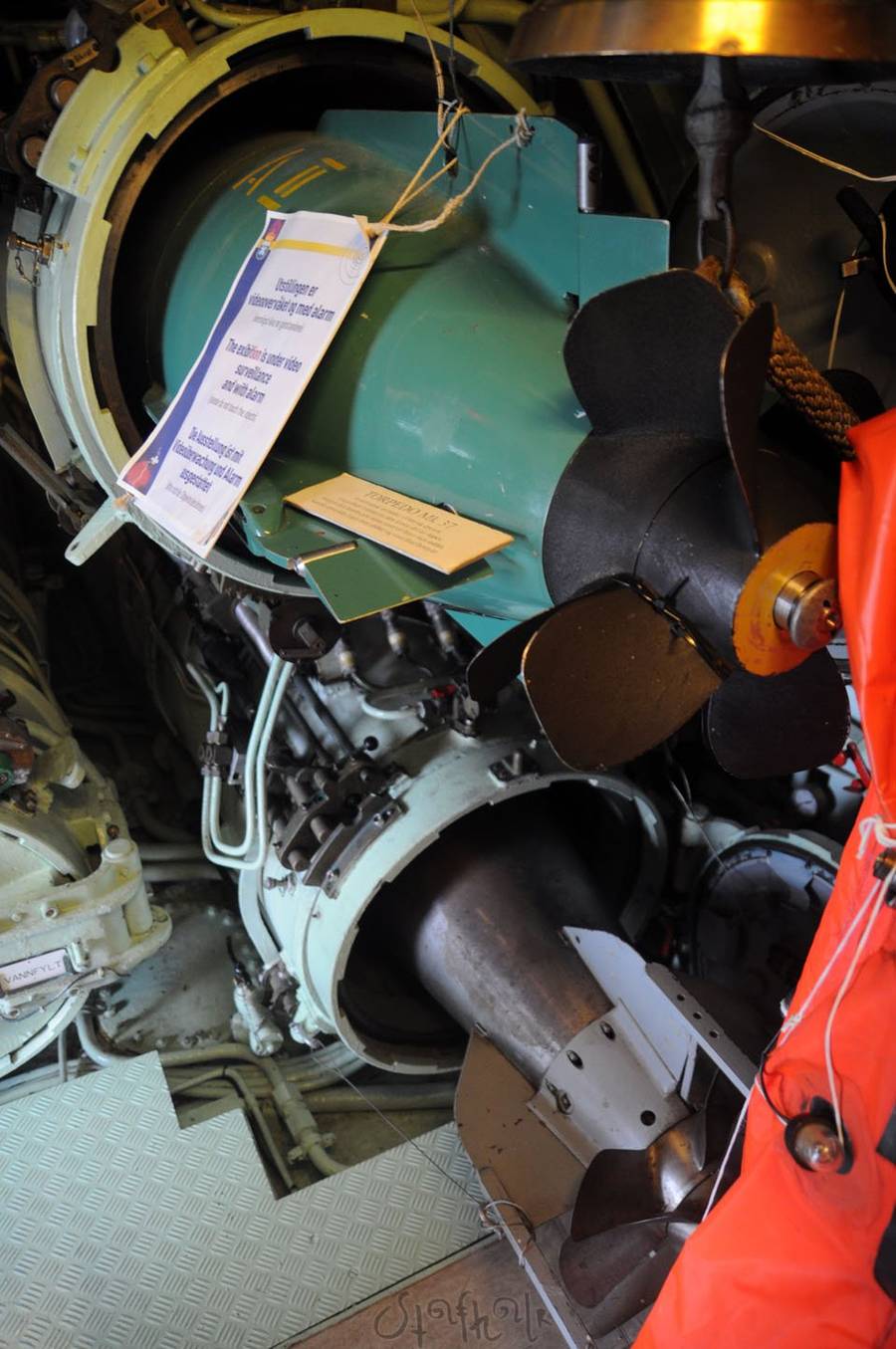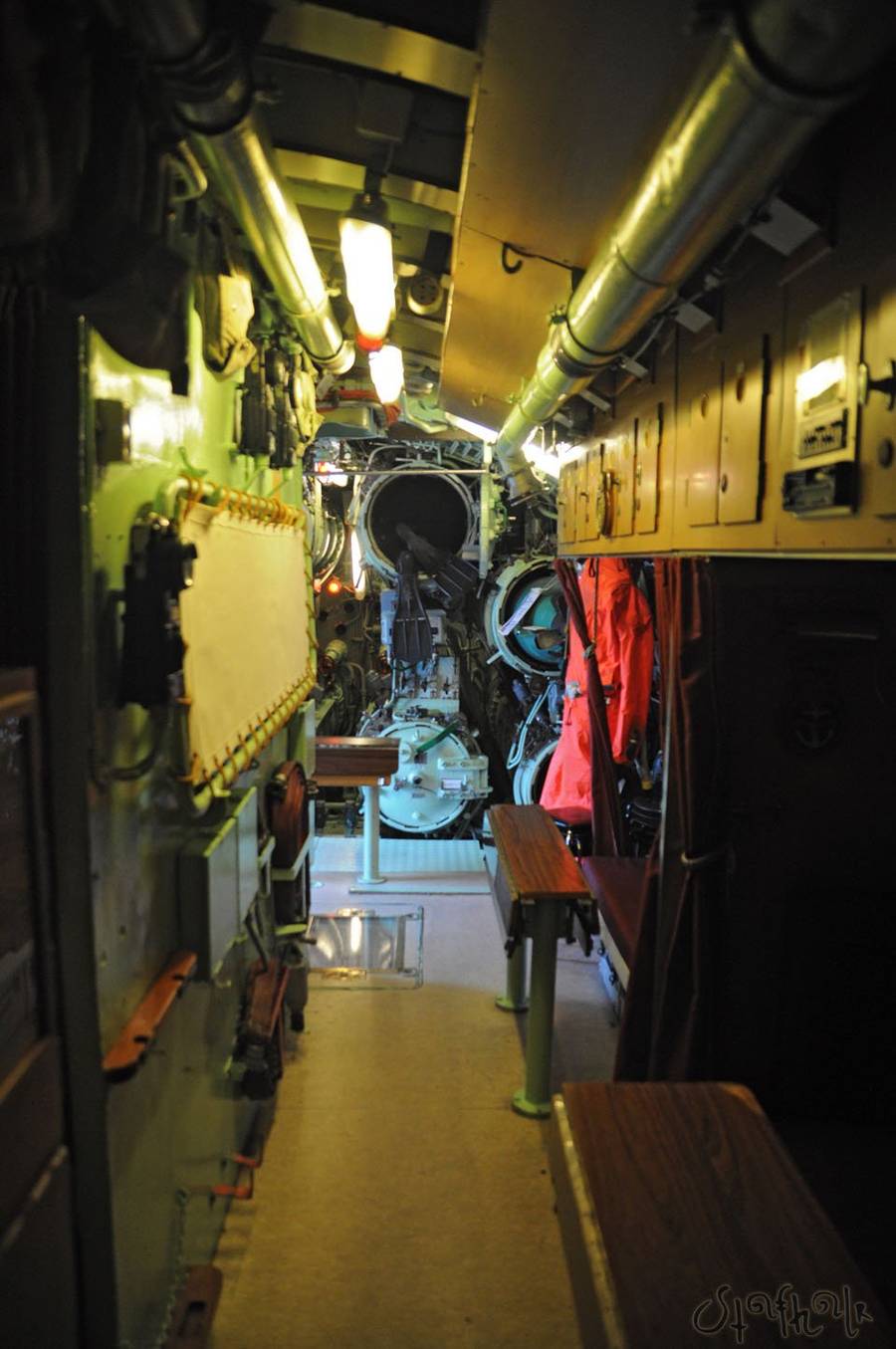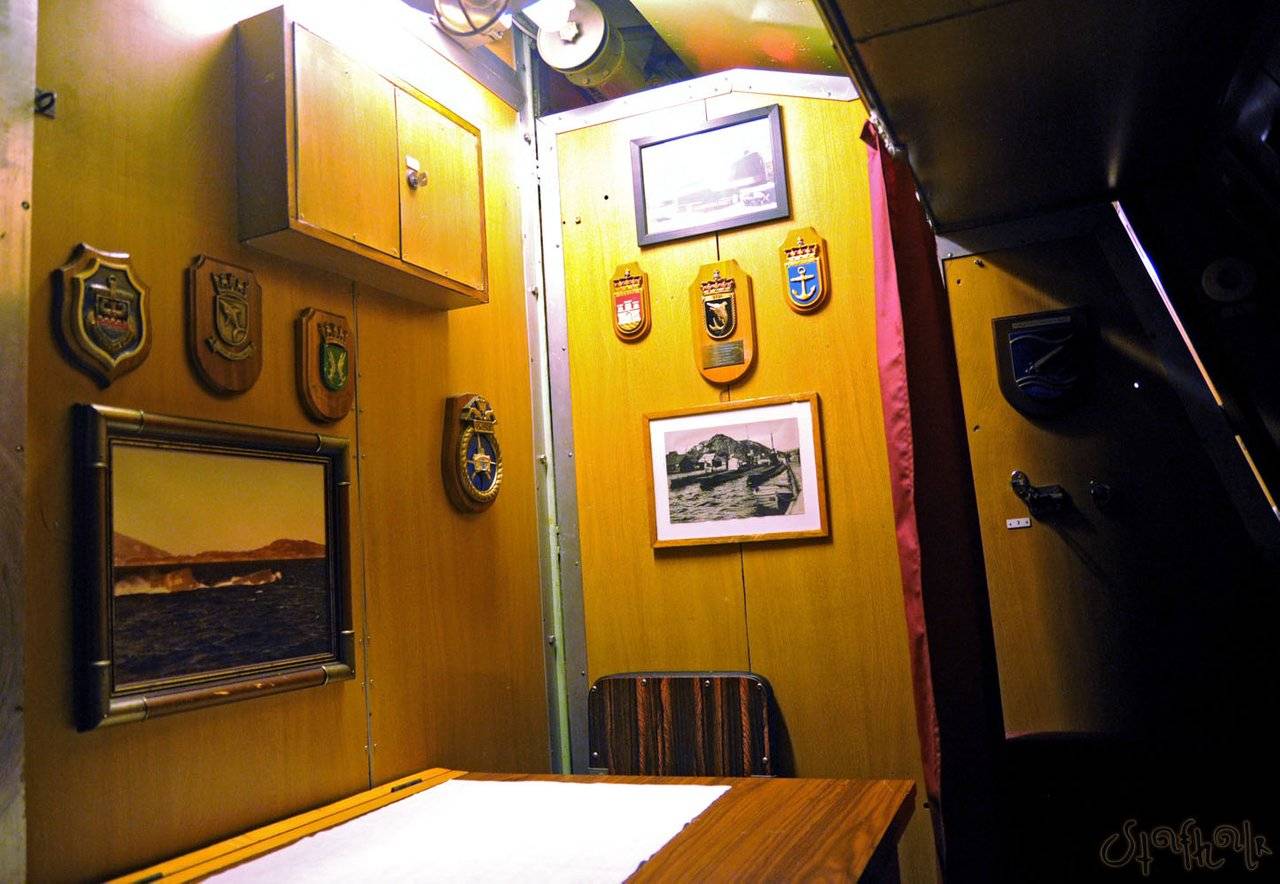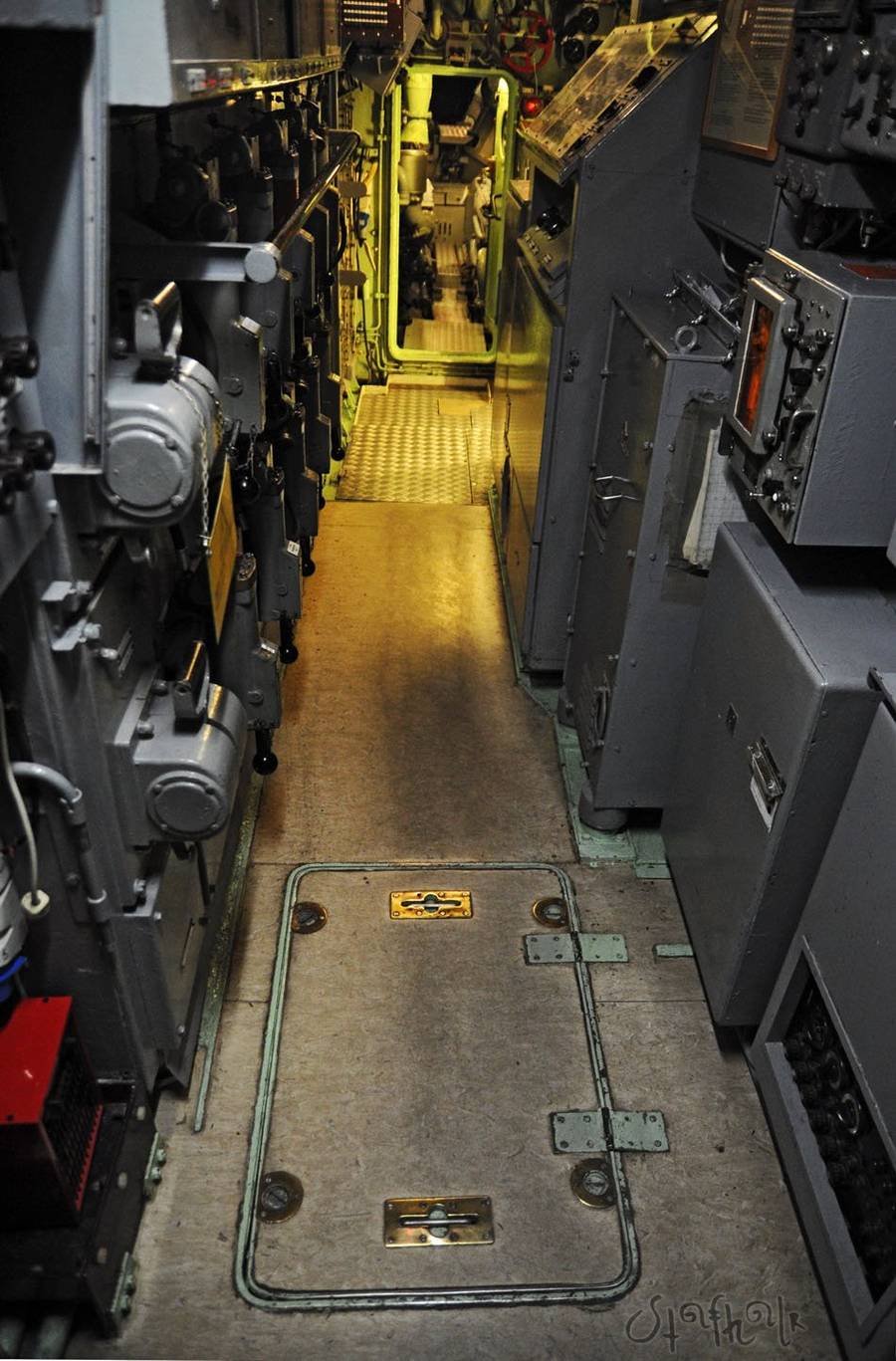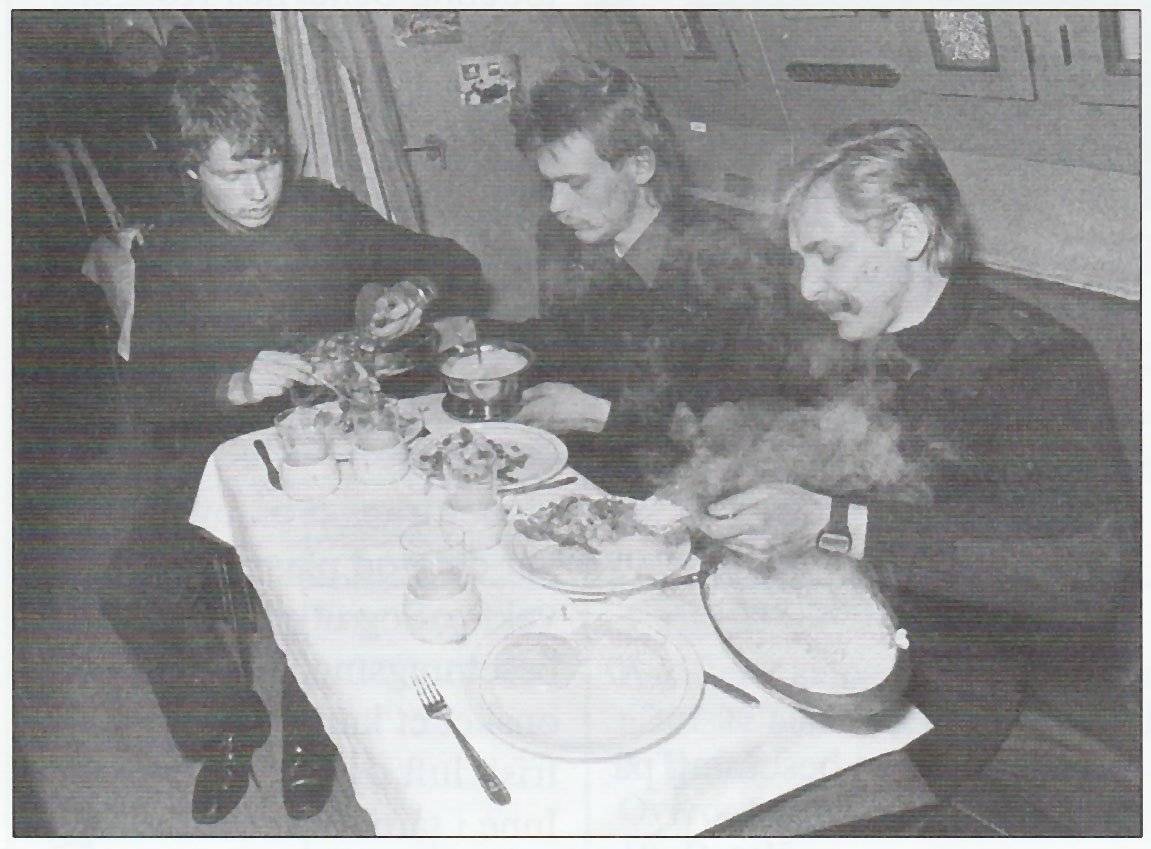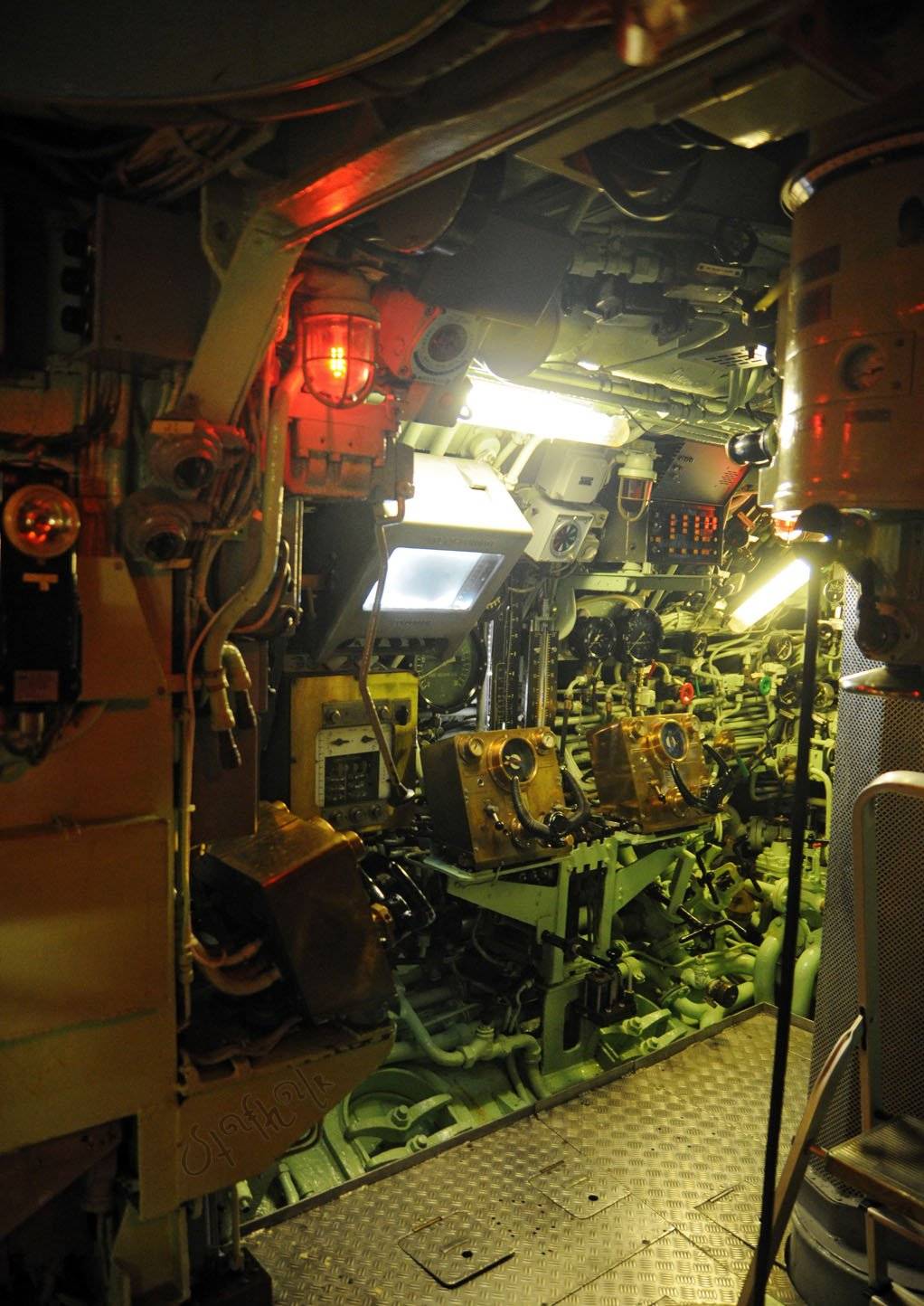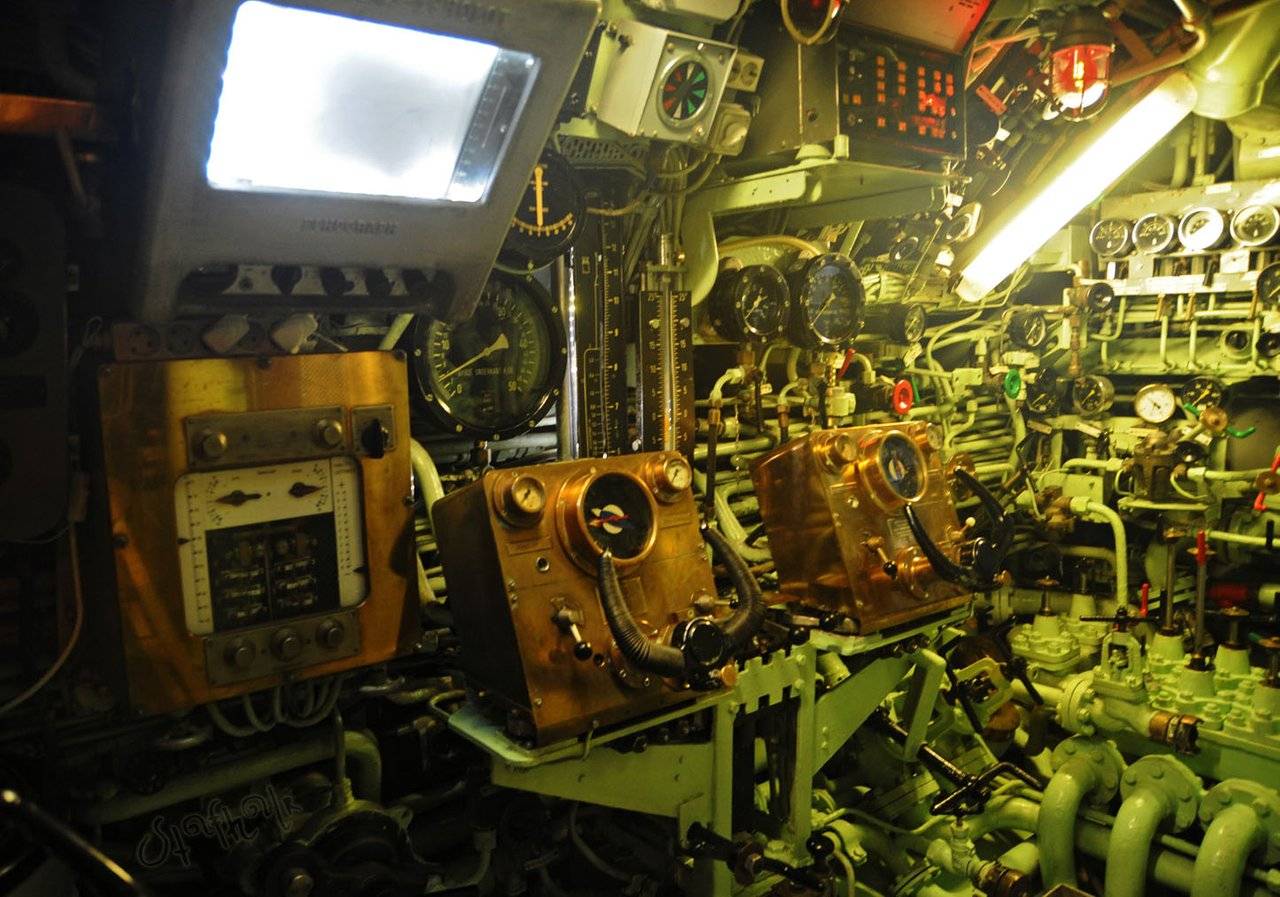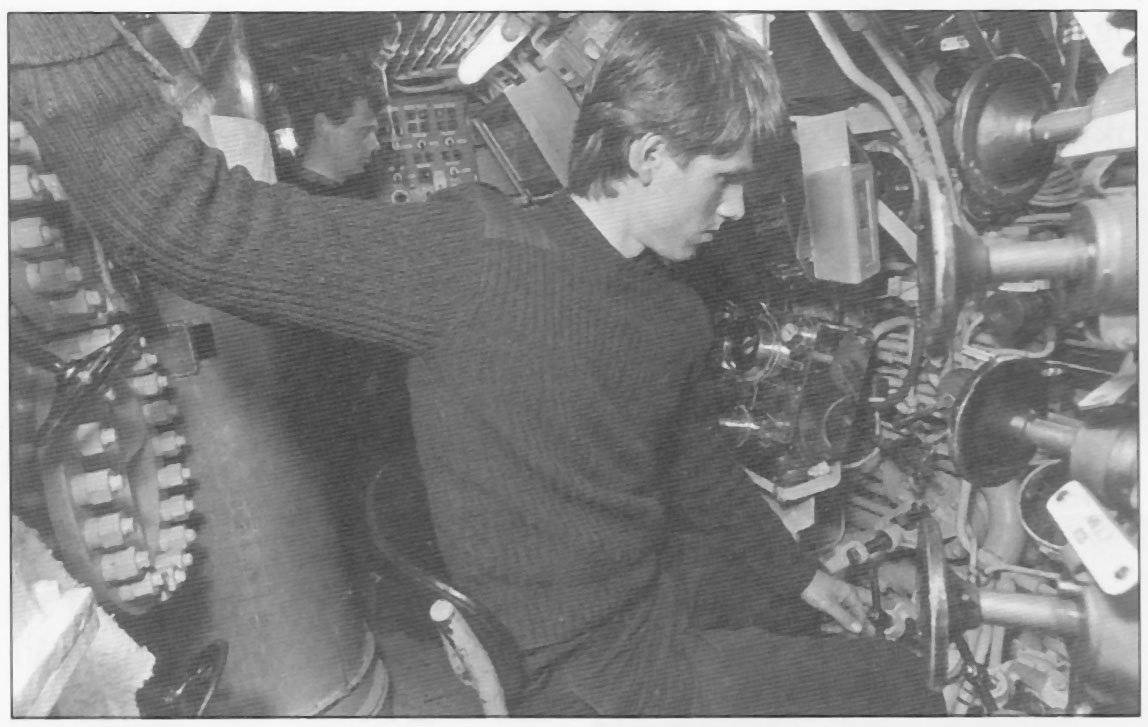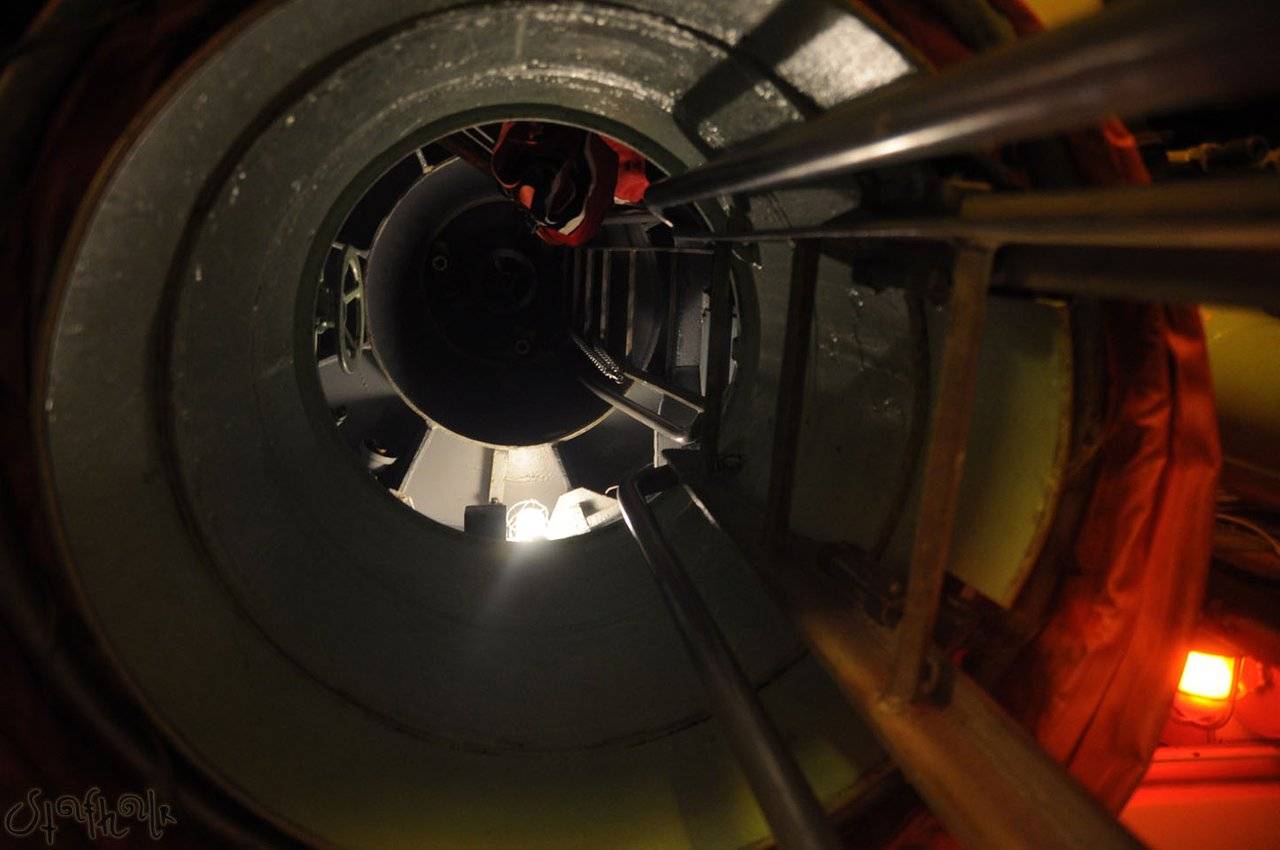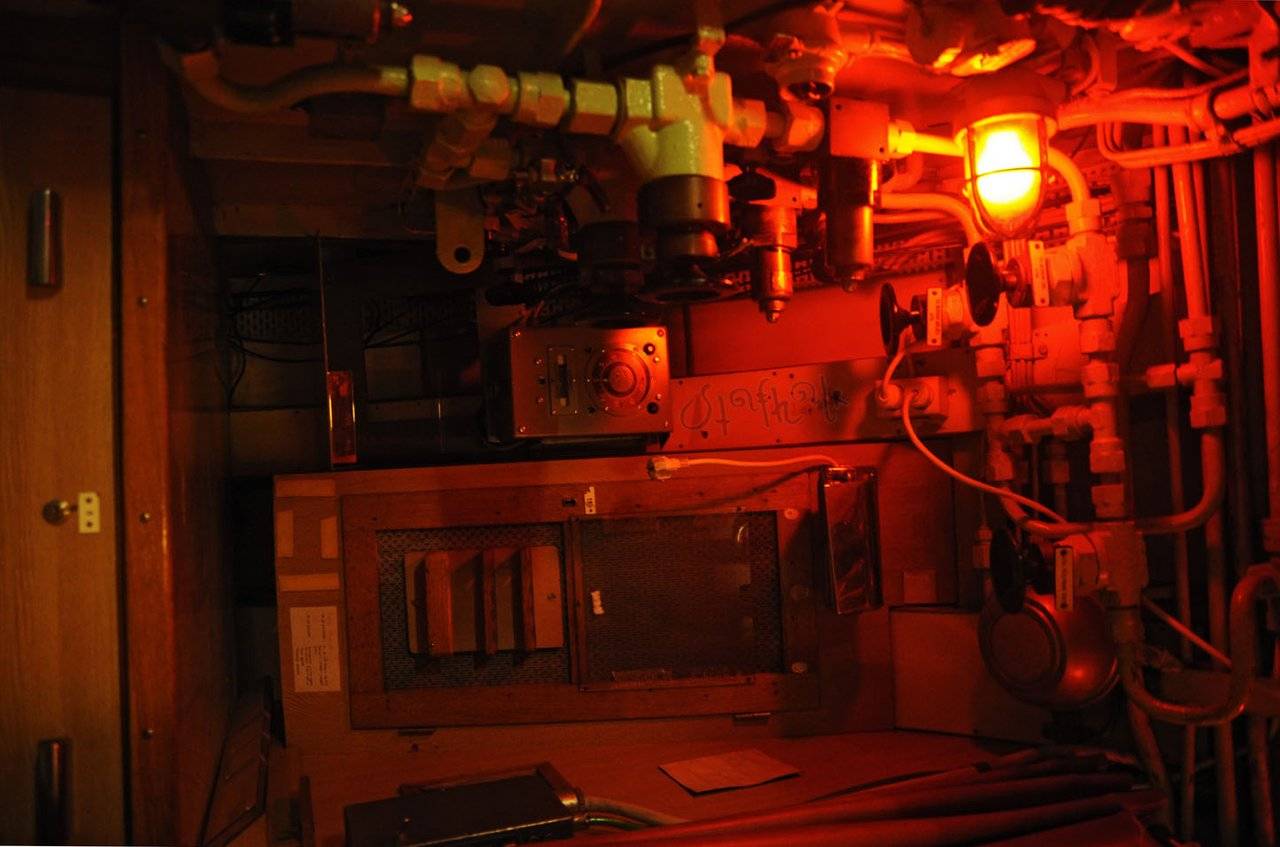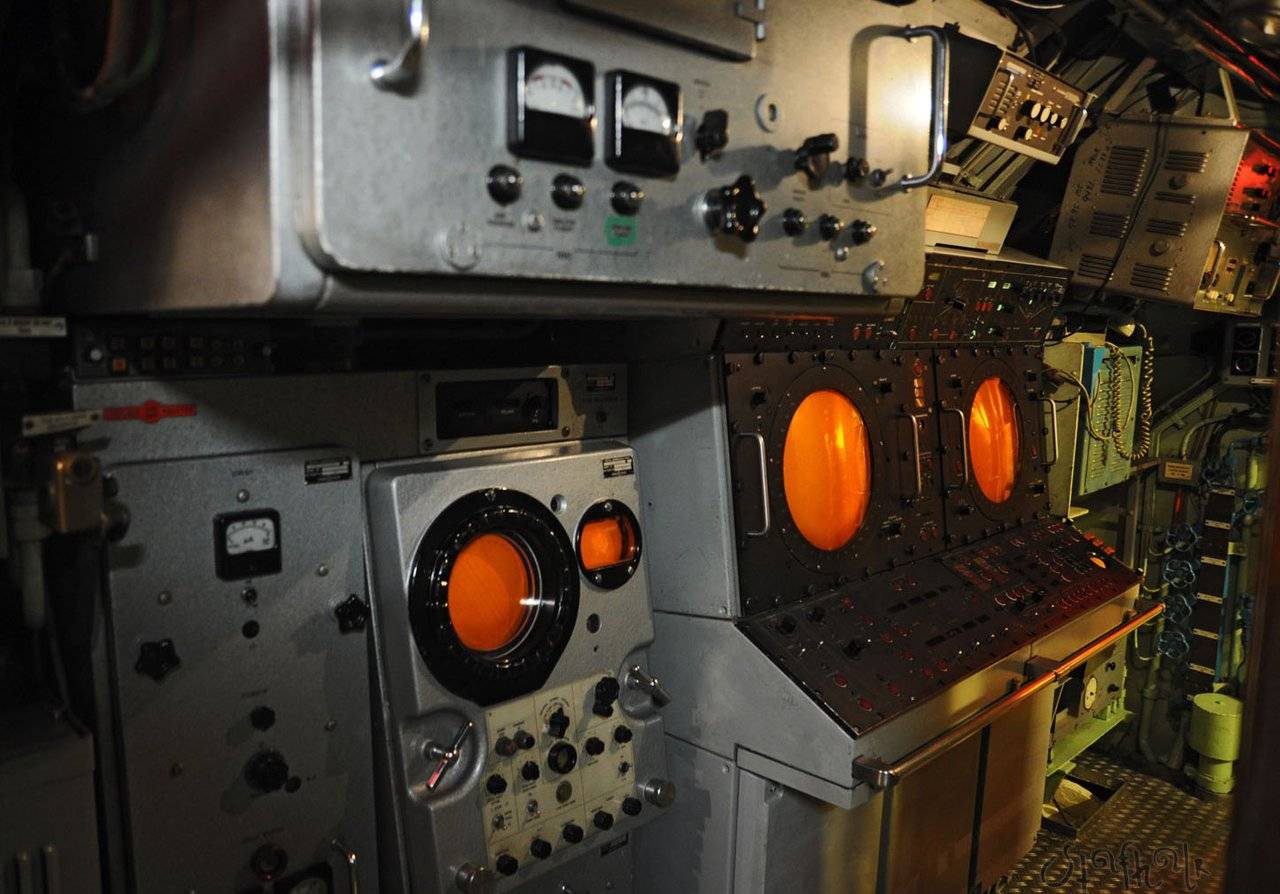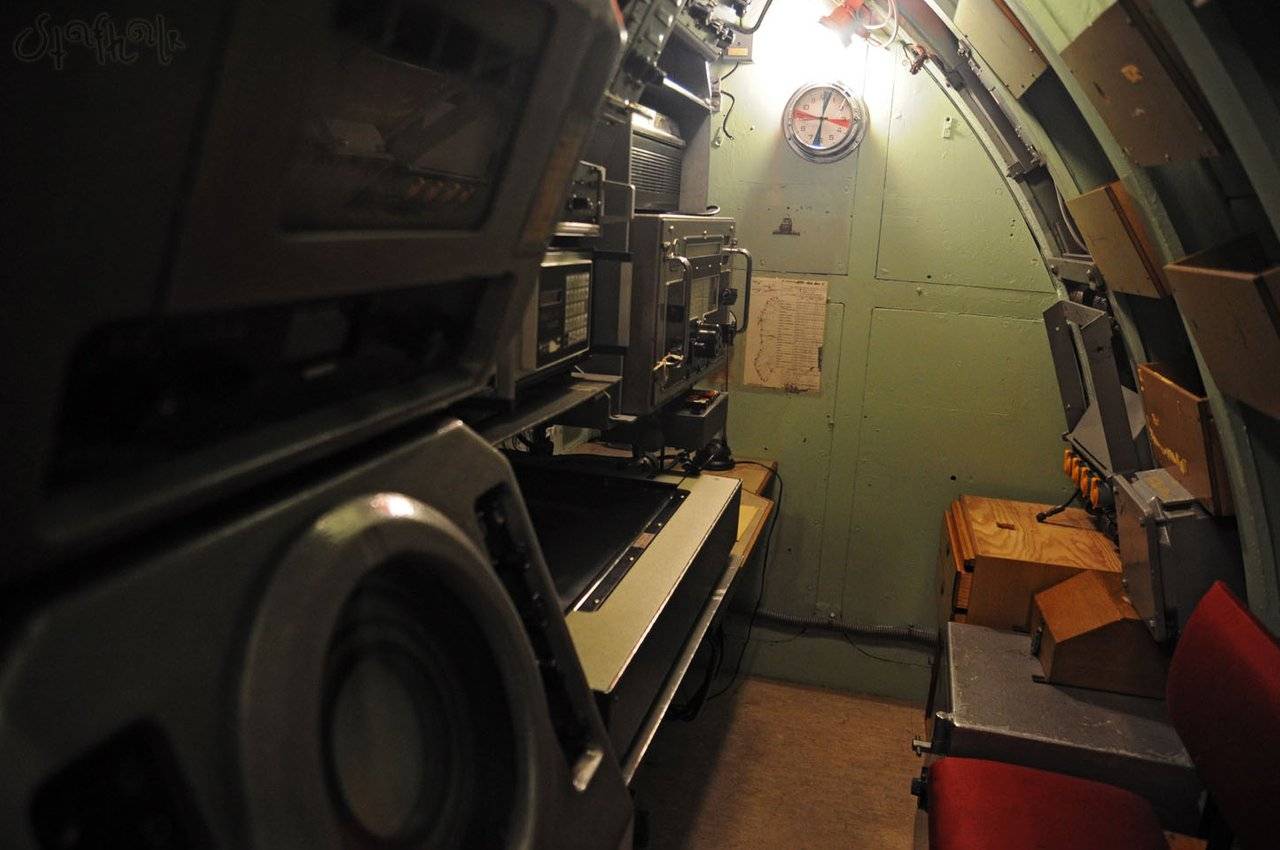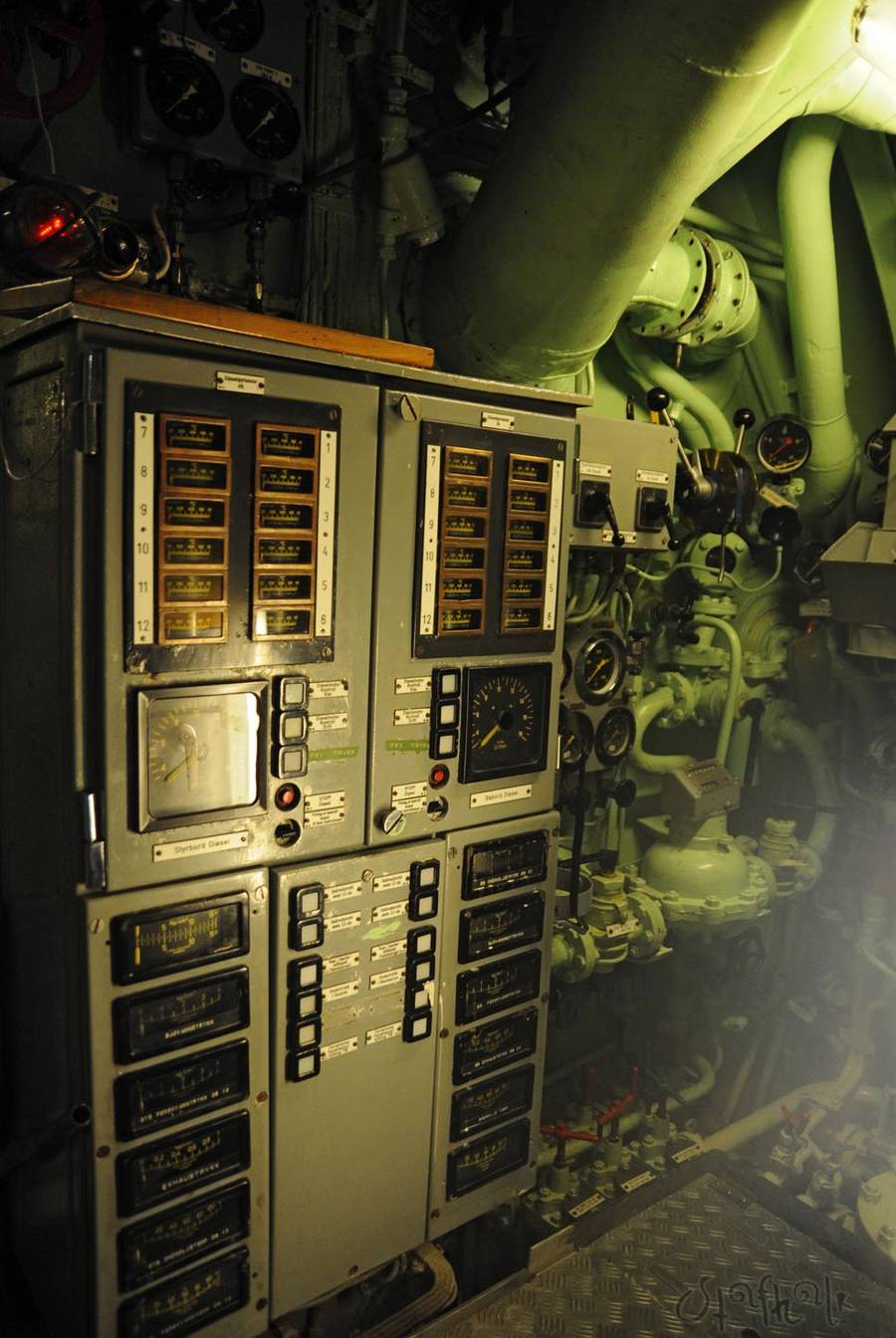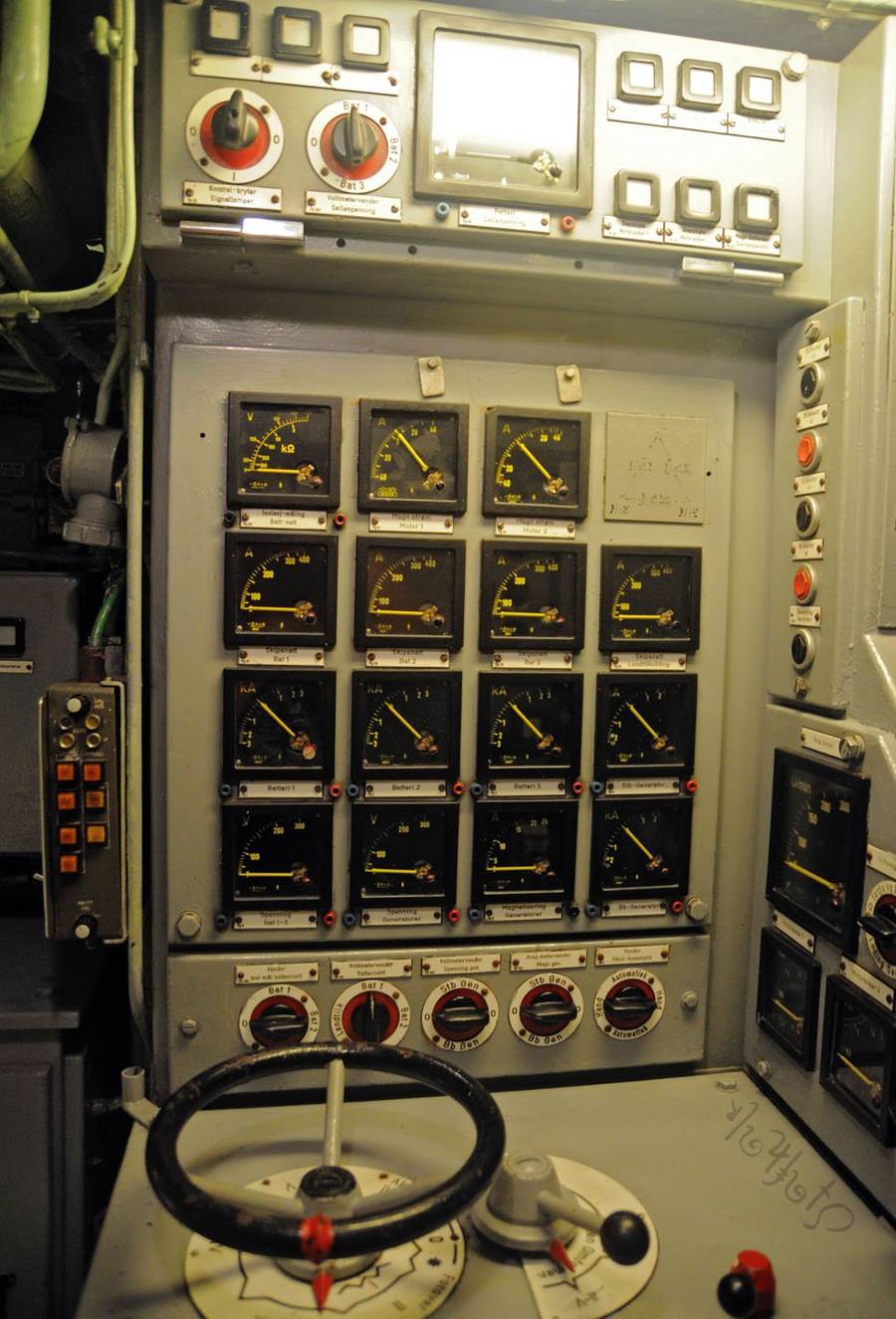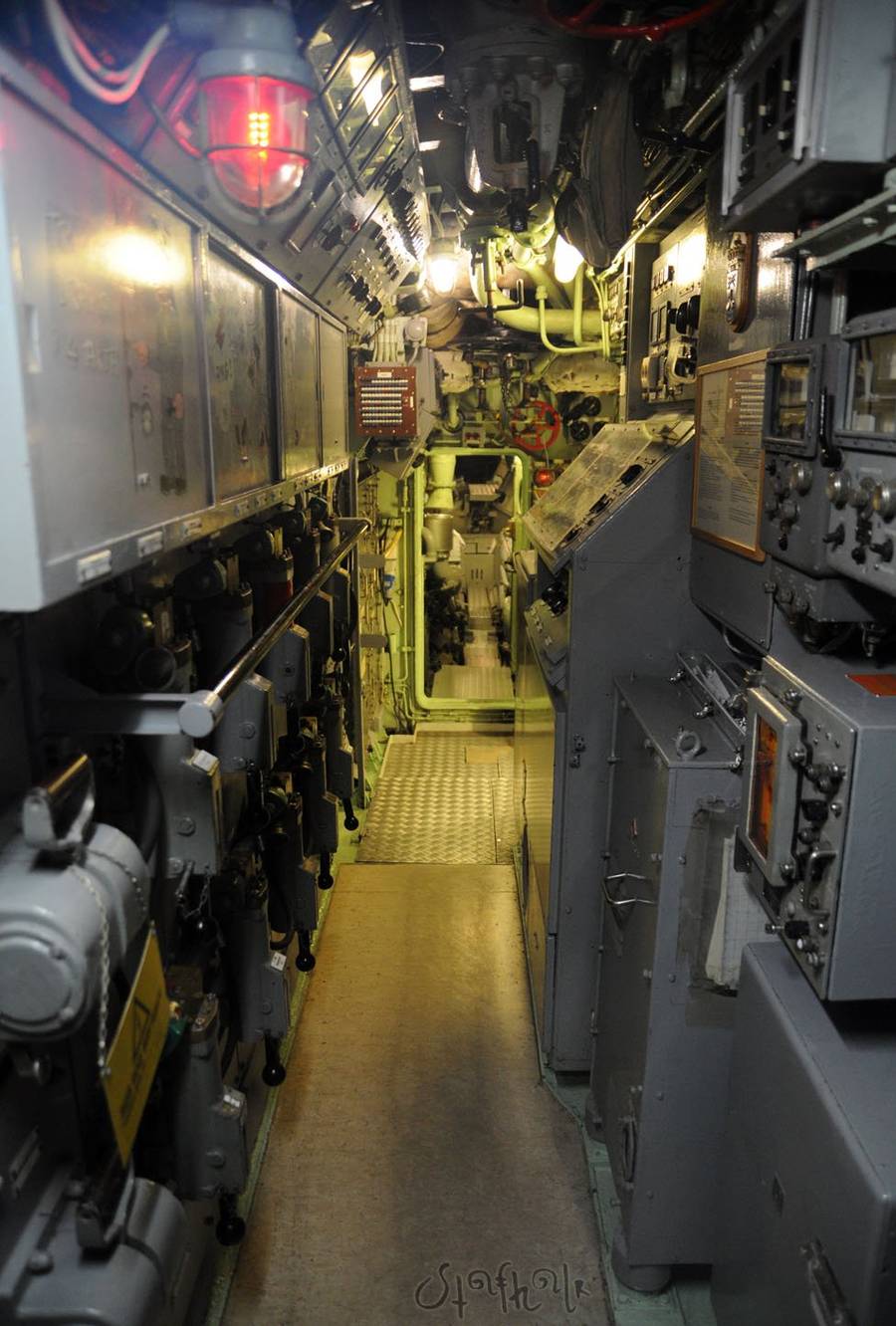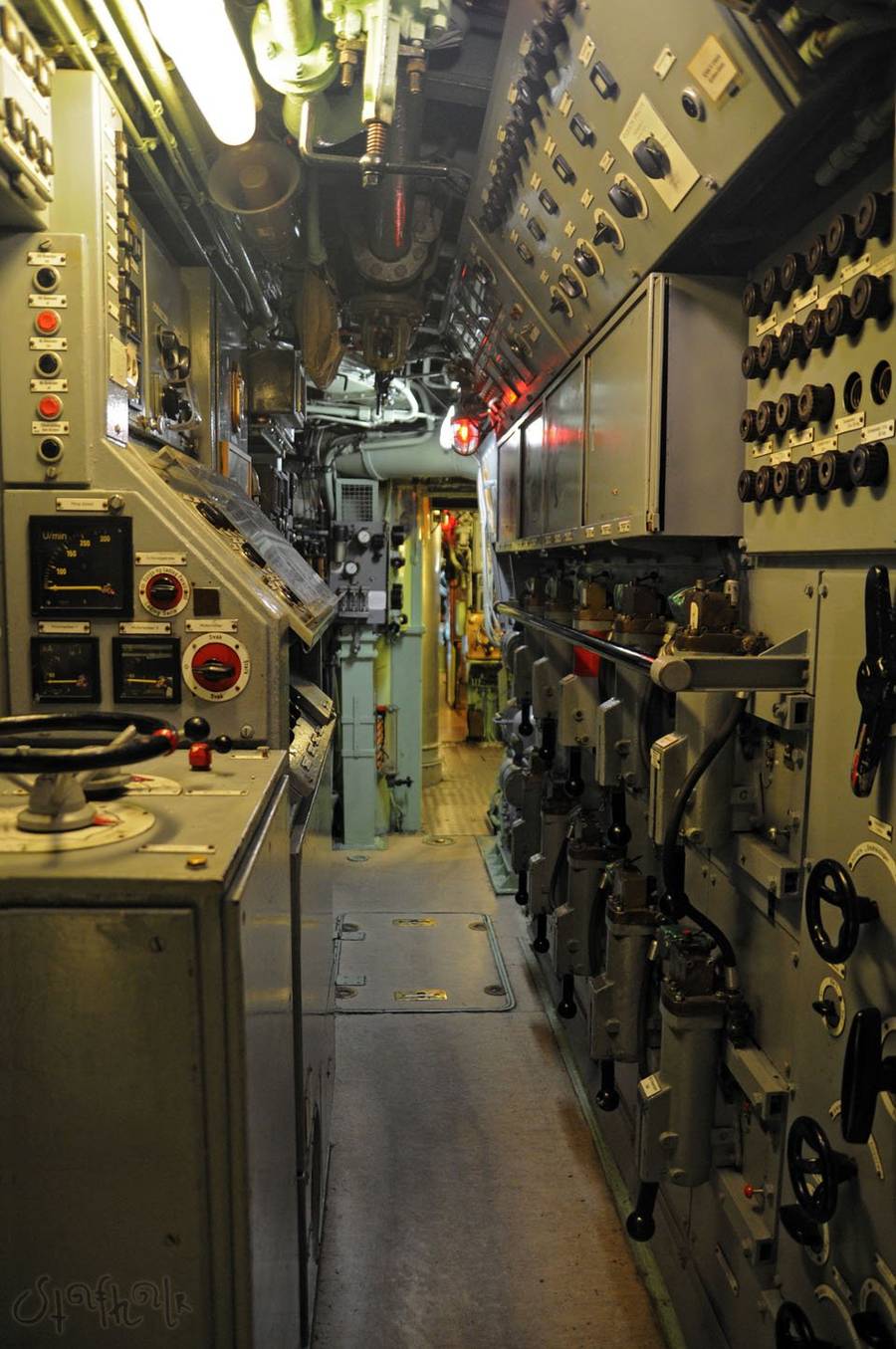Wizyta w Muzeum Marynarki Wojennej w Horten - część pierwsza
Podwodny okręt-muzeum "Utstein"
A visit to the Naval Museum in Horten - part I. Submarine museum "Utstein"
Po długim okresie wspólnych norwesko-niemieckich prac rozwojowych i testowych, w latach 1964-1967 zbudowano 15 najnowocześniejszych wówczas okrętów podwodnych klasy Kobben (niemieckie oznaczenie "typ 207").
After a long period of joint Norwegian-German development and testing work, 15 of the then most modern Kobben-class submarines (German designation "Type 207") were built in 1964-1967.
Ze swojej głównej bazy w Haakonsvern (Bergen) i Olavsvern (Tromsø) działały one przez wiele lat na wodach północnych, jako ważny element obrony przed inwazją i jako źródło informacji wywiadowczych podczas „zimnej wojny”. Rejsy na Morzu Barentsa mogły trwać 3 tygodnie, głównie pod wodą, kiedy okręty podwodne nie zbliżały się nawet do powierzchni by używać chrap.
From their main base in Haakonsvern (Bergen) and Olavsvern (Tromsø), they operated for many years in northern waters as an important element of defense against invasion and as a source of intelligence during the "Cold War". The cruises in the Barents Sea could last 3 weeks, mostly underwater, when the submarines did not even come close to the surface to snore.
Utstein to jeden z 15 norweskich okrętów podwodnych klasy Kobben. Zbudowany w Emden, w RFN w latach 1964-1967. 6 z 15 łodzi zostało zmodernizowanych i rozbudowanych w latach 1985-1993. Utstein służył do listopada 1990 r. – nie został zmodernizowany. Trafił do Muzeum Marynarki Wojennej w 1998 r. Ma własną grupę zainteresowań - „Przyjaciele Utsteina” (Utsteins venner). Klasa Kobben została stopniowo zastąpiona klasą Ula. W 2002 roku 5 ze zmodernizowanych okrętów klasy Kobben zostało przekazanych Polsce i pozostawały w służbie aż do 2021 roku.
Utstein is one of 15 Norwegian Kobben-class submarines. Built in Emden, West Germany in 1964-1967. 6 out of 15 boats were modernized and extended in 1985-1993. Utstein served until November 1990 - it has not been modernized. He found his way to the Naval Museum in 1998. He has his own group of interests - "Utstein's Friends" (Utsteins venner). The Kobben class was gradually replaced with the Ula class. In 2002, 5 of the modernized Kobben-class ships were transferred to Poland and remained in service until 2021.
Okręt napędzany był dwoma silnikami wysokoprężnymi o mocy w zakresie 460-630 koni mechanicznych każdy oraz silnikiem elektrycznym o mocy 1700 koni mechanicznych, co pozwalało mu na osiąganie prędkości 10 węzłów na powierzchni oraz 17 pod wodą. W przeciwieństwie do okrętów z czasów II Wojny Światowej, okręty współczesne (powojenne) optymalizowane były do wyższych prędkości pod wodą niż na powierzchni.
The ship was powered by two diesel engines with a capacity of 460-630 horsepower each and an electric motor with a capacity of 1700 horsepower, which allowed her to reach speeds of 10 knots on the surface and 17 knots under water. Contrary to World War II ships, modern (post-war) ships were optimized for higher speeds underwater than on the surface.
Uzbrojenie okrętu to torpedy kalibru 533 mm (T1, Mk-37 Mod 1/2, Tp 61, Tp 612, Tp 613) odpalane z ośmiu luków torpedowych.
The submarine was armed with 533 mm torpedoes (T1, Mk-37 Mod 1/2, Tp 61, Tp 612, Tp 613) fired from eight torpedo hatches.
Przedział z kajutami umieszczony jest oddzielnie pod głównym pokładem. Oprócz tego osobno łóżka znajdują się w kajucie kapitańskiej oraz jedno przy mostku.
The compartment with cabins is located under the main deck. In addition, there is a bed in the captain's cabin and one by the bridge.
Film, który nagrałem we wnętrzu okrętu:
All photographs © stafhalr 2022 except 3 from Marinemuseet in Horten brochure

